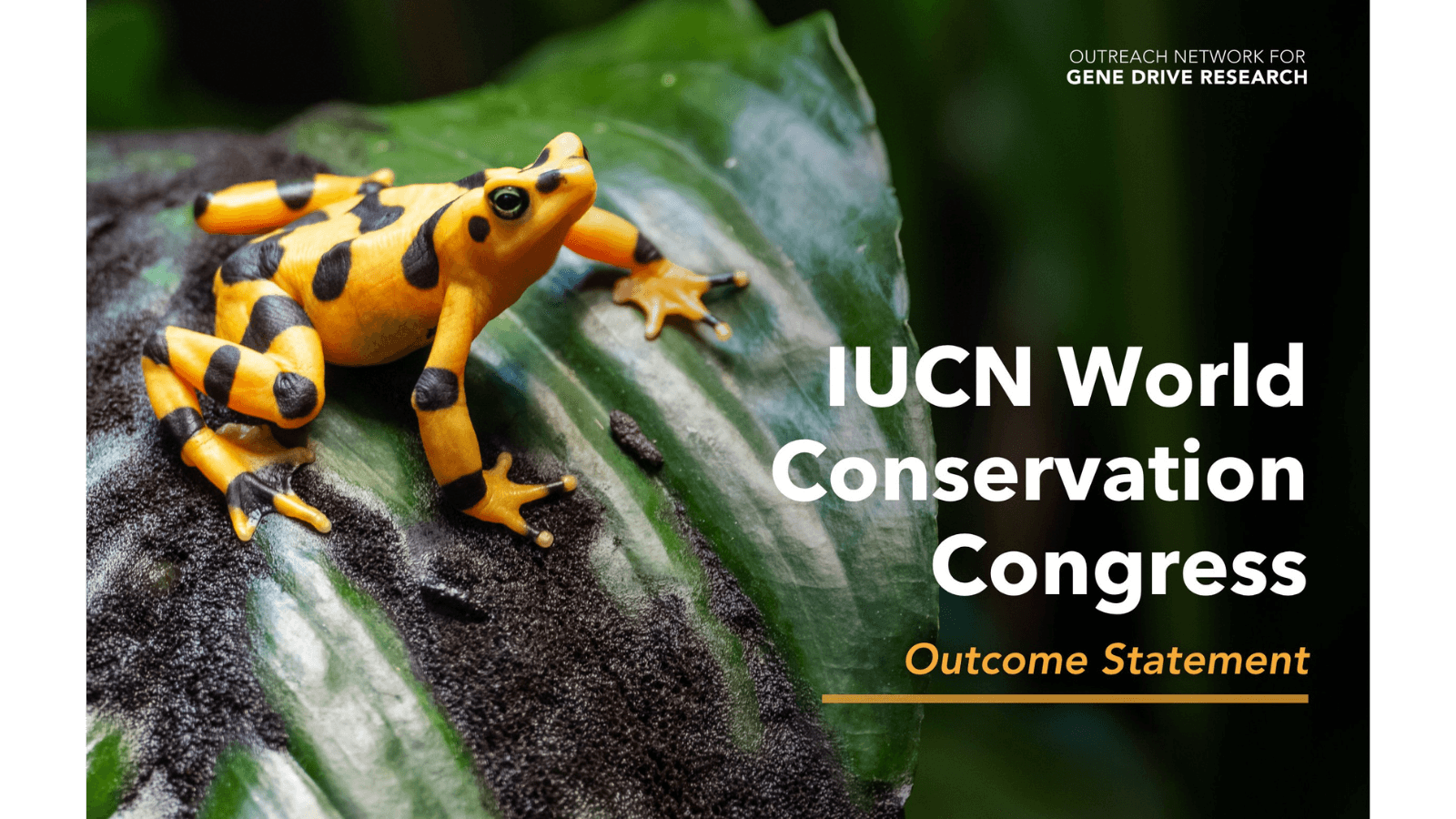Déclaration finale du Congrès mondial de la nature 2025 de l’UICN


En tant que coalition qui défend la valeur de la recherche responsable, nous saluons l’adoption de la politique de l’UICN sur la biologie synthétique, qui constitue une approche constructive, équilibrée et fondée sur la science de l’application potentielle de ce domaine émergent à la conservation.
La crise croissante de la biodiversité menace gravement l’avenir de toute vie sur Terre, avec plus d’un million d’espèces en danger d’extinction. La biologie synthétique, y compris le génie génétique, offre un nouvel espoir de trouver des solutions à la hauteur de l’ampleur et de l’urgence du défi.
Bien qu’il ne s’agisse pas d’une approbation générale de la biologie synthétique, cette politique fournit un cadre important pour une prise de décision éclairée et responsable au cas par cas, sur la base de preuves scientifiques et d’évaluations des risques. Elle reconnaît l’importance pour les gouvernements de prendre des décisions sur l’utilisation de la biologie synthétique en tenant compte de leurs priorités et contextes nationaux spécifiques.
En adoptant sa politique sur la biologie synthétique, l’UICN a également souligné l’importance de la poursuite des recherches dans ce domaine pour d’autres applications, notamment la lutte contre les maladies à transmission vectorielle telles que le paludisme et la dengue. Cela permet de poursuivre les recherches sur de nouveaux outils potentiellement révolutionnaires pour relever certains des défis sanitaires les plus persistants et les plus pernicieux au monde.
Les résultats du Congrès mondial de la nature renforcent le rôle de l’UICN en tant que leader politique responsable et s’alignent sur les pratiques internationales déjà établies dans d’autres forums et accords clés, notamment la Convention des Nations unies sur la diversité biologique (CDB) et le Protocole de Carthagène.
À l’avenir, nous attendons avec impatience les propositions du Conseil de l’UICN visant à renforcer les efforts de renforcement des capacités dans le domaine de la biologie synthétique. Nous reconnaissons également l’intérêt d’une collaboration plus étroite avec la Convention des Nations unies sur la diversité biologique (CDB), en particulier dans le cadre de l’élaboration de son « Plan d’action thématique pour le renforcement des capacités en biologie synthétique ». Une telle coordination sera essentielle pour garantir une mise en œuvre inclusive, éclairée et efficace de la décision de l’UICN par toutes les parties prenantes, en particulier dans les pays à faible et moyen revenu.
